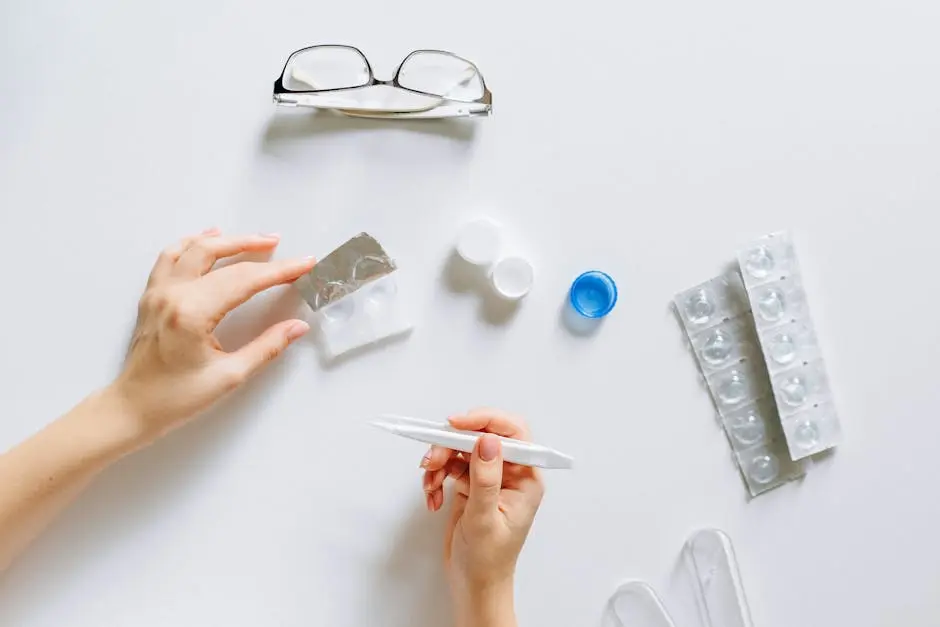
Dry eyes can be an irritating and persistent problem for many. While there are medical treatments available, lifestyle changes can play a significant role in alleviating symptoms. In this blog, we’ll explore the most effective ways to manage dry eyes by adjusting daily habits.
Understanding the Causes of Dry Eyes
Before tackling dry eyes through lifestyle changes, it’s essential to understand what causes them. Common causes include prolonged screen time, poor air quality, and dehydration. Another significant factor is age; as we get older, our bodies naturally produce fewer tears. Medications and health conditions like allergies or autoimmune diseases can also contribute to dry eyes.
Additionally, environmental factors such as wind, smoke, or dry climates can exacerbate symptoms. For some, contact lens wear can be a persistent irritant, though switching to lenses designed for dry eyes or limiting contact lens use might provide relief. Knowing these root causes can help in customizing lifestyle changes to effectively target your specific triggers.
Step 1: Stay Hydrated
Adequate water intake is crucial for maintaining healthy tear production. Make it a habit to drink at least eight glasses of water a day to help keep your eyes moist. Staying hydrated ensures that your body can produce tears effectively, which are necessary for eye lubrication.
Incorporating foods with high water content, such as fruits and vegetables, can complement your hydration efforts. Options like cucumbers, watermelons, and oranges are not only refreshing but also rich in vitamins that benefit your overall eye health. Remember, consistent hydration is key to reducing the discomfort associated with dry eyes.
Step 2: Adjust Screen Time
Take regular breaks when using screens. Implement the 20-20-20 rule: every 20 minutes, look at something 20 feet away for at least 20 seconds to reduce eye strain and dryness. This simple adjustment can make a significant difference.
Consider adjusting the brightness of your screens to match the light level of your surroundings, and make use of blue light filters to minimize strain. Position your screen about an arm’s length away from your face and slightly below your eye level, reducing the need to widen your eyes, which can dry them out further.
Step 3: Improve Indoor Air Quality
Use a humidifier to add moisture to the air, especially during the winter months. Avoid direct air flow from fans or air conditioning on your face. Placing a humidifier in your frequently used rooms can significantly reduce dryness.
You might also consider indoor plants, which can naturally increase humidity while purifying the air. Choose varieties like peace lilies or spider plants, known for their resilience and air-cleansing properties. Such changes not only enhance the ambiance but also contribute positively to your eye health.
Step 4: Eat a Balanced Diet
Incorporate foods rich in Omega-3 fatty acids, like salmon and flaxseeds, which help reduce inflammation and support tear production. Adding walnuts and chia seeds to your meals can also provide a healthy boost to your Omega-3 intake.
Additionally, vitamins like A, C, and E play a crucial role in maintaining eye health. Carrots, kale, and sweet potatoes are excellent sources of these vitamins. A diet enriched with these nutrients not only addresses dryness but also supports your overall vision health.
Step 5: Practice Good Eye Hygiene
Ensure regular cleaning of eyelids and use artificial tears or lubricating eye drops as needed to maintain eye moisture. This simple hygiene practice can prevent irritants and bacteria from exacerbating dryness.
Consider using a warm compress on your eyes in the evenings. The warmth can help to unblock the glands responsible for tear production, offering relief from the symptoms of dry eyes. Routine practice of good eye hygiene can serve as a preventive measure, making your eyes more resilient to environmental factors.
Conclusion: Taking Control of Dry Eyes Through Lifestyle
Incorporating these lifestyle changes can greatly improve the comfort and health of your eyes. While they may not replace medical treatments, they can complement them effectively and reduce the severity of dry eye symptoms. Remember to consult with a healthcare professional if symptoms persist.

